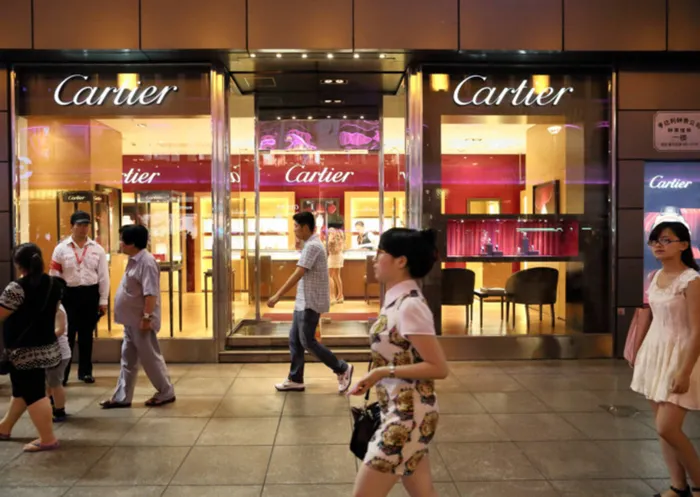Luxury goods sales running out of steam

A Cartier store offers luxury watches and jewellery in Shanghai. Sales of personal luxury items such as apparel and watches will rise just 2 percent to 217bn euro this year, and 6 percent on a currency-neutral basis, according to a report by Bain. Photo: Bloomberg A Cartier store offers luxury watches and jewellery in Shanghai. Sales of personal luxury items such as apparel and watches will rise just 2 percent to 217bn euro this year, and 6 percent on a currency-neutral basis, according to a report by Bain. Photo: Bloomberg
Paris - Worldwide luxury goods sales will expand at the slowest pace since 2009 this year as slack Chinese consumption and the weakness of the Japanese yen weigh on growth, according to an estimate from Bain & Company.
Sales of personal luxury items such as apparel and watches would rise 2 percent to e217 billion (R2.9 trillion), a fifth of last-year’s pace, the business advisory firm said yesterday in a global report. That would be the weakest growth since sales declined about 8 percent four years ago.
LVMH Moët Hennessy Louis Vuitton and Kering this month reported slowing revenue growth as their biggest brands tightened distribution and raised prices. Gucci sales fell in China in the third quarter, owner Kering said last week. Swatch Group said on Friday that declines in the value of currencies such as the yen were holding back growth.
The yen’s devaluation was driving more than half the differential between real and nominal growth, Bain said in the report. The yen has slumped 15 percent against the euro this year. Luxury spending will climb 6 percent on a currency-neutral basis, compared with 5 percent growth in 2012, according to the report.
The Americas would surpass Asia as the industry’s “main growth engine” this year, while new hotspots for demand included south-east Asia, Australia and Africa, Bain said.
It added that Europe would expand at the same pace as the global industry, as increasing tourist flows offset a decline in discretionary spending by locals, the consultant said.
In China – which will surpass France this year as the fourth-biggest luxury market behind the US, Japan and Italy – a government crackdown on luxury spending by public officials was still weighing on gift purchases, Bain said.
Globally, sales of the most expensive clothing were growing faster than cheaper alternatives, Bain said.
Still, the discount segment was “increasingly important as part of the consumer quest for value for money”, it said.
Women are buying more products typically associated with men such as complex watches, while men are spending more on leather goods, helping accessories remain the fastest-growing – and biggest – category this year, according to the report. – Bloomberg